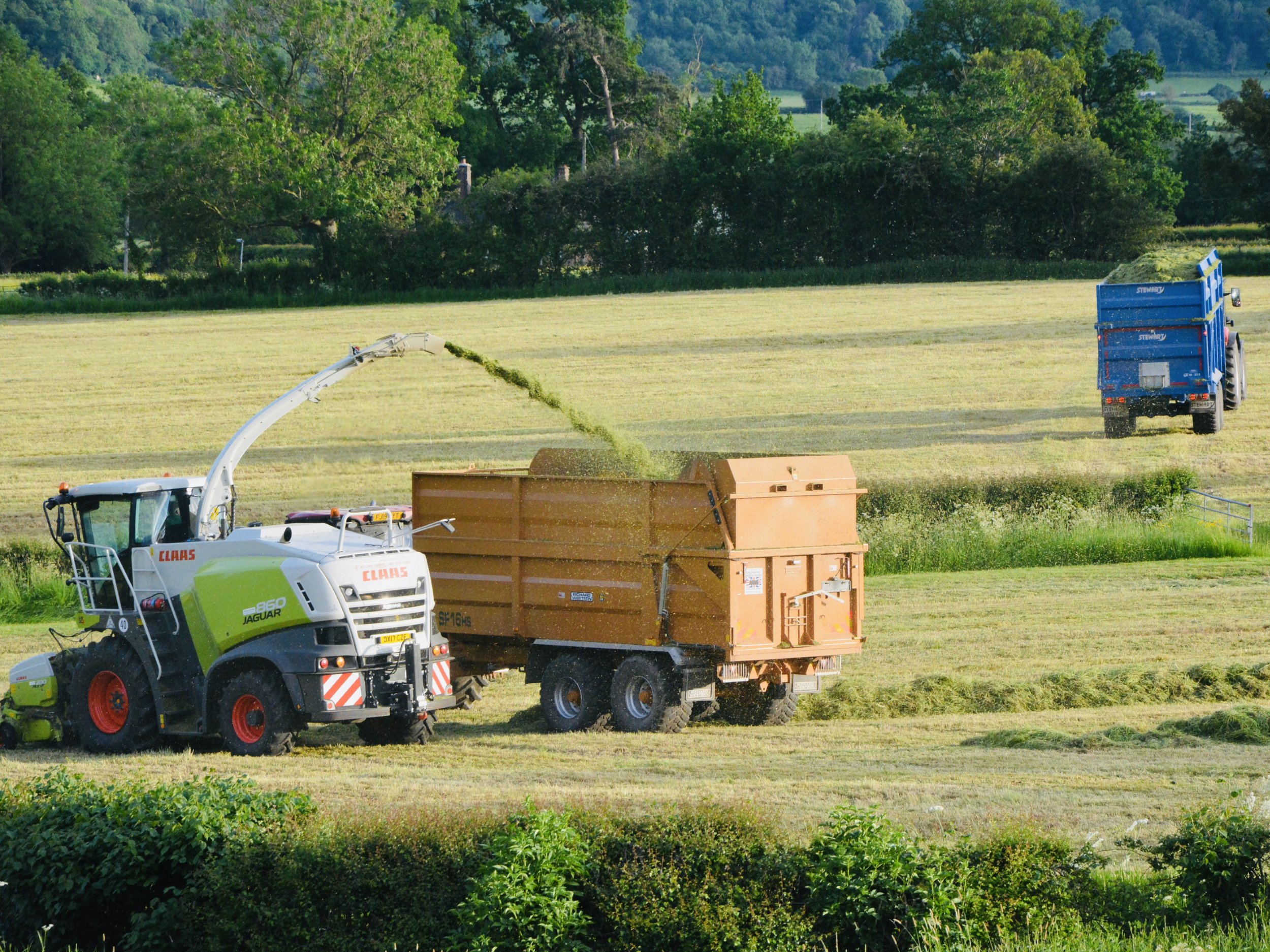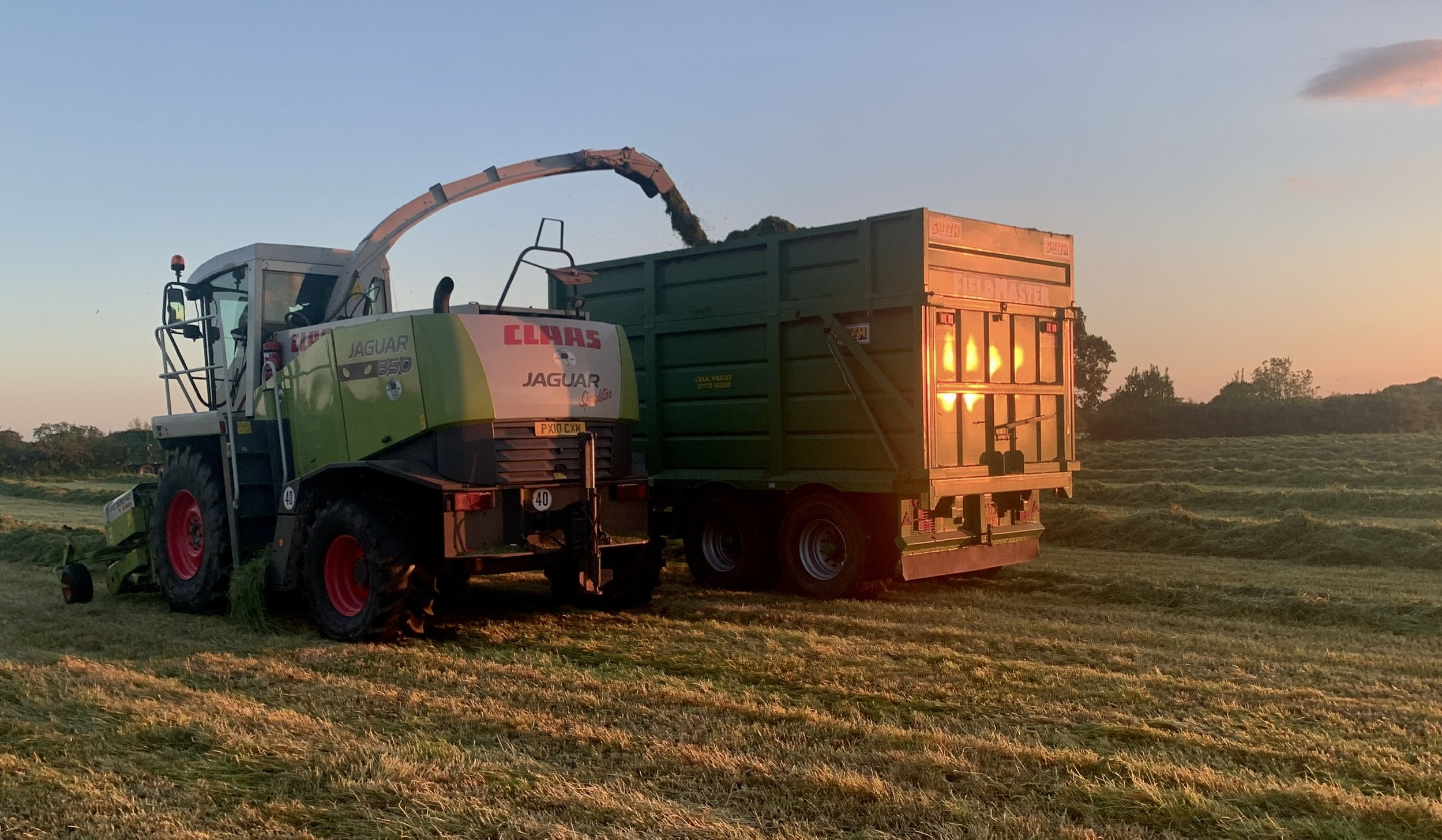Are remote silage clamps a good idea?
Farming is changing, always has, always will. Be it changing climate, economic or political pressures, things are going to have to change and there is no standing in the way of it. One of the obvious changes is that operations and organisations get bigger. Bigger farming operations spread over many miles create challenges that we never previously had to tackle.
Whilst this is an evolving issue for the large scale growing dairy enterprise, it’s a problem that the AD industry has been staring down for quite a while now. Securing land to grow enough forage for a hungry anaerobic digester plant is no longer quite as straightforward as it was. There has always been competition for land use but the changing world has made this more difficult to evaluate.
For years the price of wheat fluctuated between £120 and £180 per tonne and we all knew where the economics stood. But after Mr Putin lost his temper with the neighbours this fluctuation in the price of wheat shifted to £150-£350 per tonne and the price of fuel and fertiliser took off like a SAM missile. All of a sudden that contract to grow forage rye or maize looked much less - or maybe a bit more - attractive. The changing economics of cereal production has made finding enough land difficult. This means AD plant operators have had to throw the net a bit wider and have ended up with land a looong way away from the plant.
So faced with land spread over half a dozen counties, where the hell do you build the silage clamps to hold all this stuff?
Should you build remote silage clamps?
I guess you have two options here, you can either store the silage where you grow it or where you use it. Ultimately you are going to have to move it to the plant (or the cows) at some point but there might be some attractive options to store it remotely.
Storing silage - or more correctly making silage - where it’s grown is a good idea because as soon as you harvest the forage the microbes get to work on it. I’ve looked at some of these issues before but in general the take away rule is, the faster you can get the stuff into a clamp, consolidated and sealed, the better. This type of operation is also easy for a traditional forage harvesting contractor to accommodate. Long hauls on the road are costly & inefficient and the chances of tractors getting caught up in traffic leads to a trailer feast or famine situation for the chopper and back at the pit.
Maize harvest brings some more issues too because it’s usually less than ideal ground conditions when the maize crop is ready to be harvested. This produces all sorts of mud on road issues and is not something anyone wants to get into if it can be avoided. So maybe a field clamp or Agbag is going to be the answer?
These are some convincing arguments but I’m still not convinced. As I have covered previously, there are some significant losses with both field clamps and silage sausages and I think there is enough potential savings to make a cast iron case for building a clamp.
Operating remote silage clamps.
So let's assume you chose to build remote clamps; how are these going to operate come feed out time? Well the same rules apply to all silage clamps once you open them, work through it at least 2m per week, uncover as little as possible and look after the face - probably with a shear grab. But now we can load the silage into a lorry to get it back to the point of use and this means clean tyres, higher road speeds and big loads.
This is quite a neat solution, although there are some problems…
You’re going to need a loader at both ends because once the silage is loaded and on the road, you’re going to need another loader at the other end to get it to its final destination. You are also going to expose the silage to some significant losses too because silage is no longer stable once you have removed it from the clamp, but I’ll come to that in a moment.
What are the benefits of central silage storage?
Well if you’re not storing silage remotely, then you’re going to have to store it centrally and what are the pros and cons of this? There are a few benefits that might make this a more attractive option and they really all revolve around losses.
Storing silage is always a balance of losses but in general, larger volumes of silage have lower percentage losses. This is because the losses are always higher around the edges, particularly around the shoulders of the clamp, and the laws of physics dictate that the larger the body, the lower the surface area ratio. The fermentation is often more reliable too, so big clamps generally produce better, more consistent silage.
Bigger clamps are more economical to build too - sure the actual bill is pretty scary, but the cost per tonne stored falls as the clamp gets bigger. So a big clamp is a good idea but it’s also important to have it as close as possible to the plant.
“Now hang on a moment, you just said it needs to be close to the fields” I hear you shout.
Yeah I did but given that you’re going to have to choose between one or other, I’d always want to move the forage to the clamp rather than the silage to the plant! And it’s all because of the microbiology (again).
The microbiology of transporting silage
Microbiology is silage and silage is microbiology because it’s these guys that do all the work to make - and to break - your silage. The crop is already living in a soup of microbes but these hungry little chaps can’t get at the carbohydrates and proteins within the crop until you harvest and chop it. From then on it’s a race for supremacy between the good guys and the bad guys.
This isn’t the place to go into these details but just remember that all the microbes are growing and reproducing whilst the forage is in the trailer on its way to the clamp. In fact the growth and activity doesn’t stop until stability is reached in the clamp; and stability is an oxygen free state of low pH. As soon as you open up the clamp the oxygen is reintroduced and the bad guy microbes get going again.
So what difference does it make where the clamp is built?
It’s time that makes all the difference. On the way to the clamp, there are very low numbers of microbes in the forage because they have only just got the keys to the larder and they haven’t been reproducing much yet. The forage is also not very compacted and microbes don’t have legs so they are not in very close contact with the feed stuff. On the way to the AD plant, the silage is more compact and there are already established - if sleepy - populations of undesirable microbes. These guys can consume much more feed value en-route to the plant. The feed value of the silage is also more available to the microbes at this stage too.
To be fair any long road trip to the clamp does also have a negative effect on the silage as there is an increased opportunity for the undesirable populations to get started, but on balance this is much less of an issue than moving the fermented silage.
So on balance I will always aim to build clamps closest to the point of use, the cows or the AD plant. How you actually transport the stuff is another matter and the topic of the next article.
If you want to discuss where you should build your silage storage or would like to discuss any other aspects covered in this series, contact me at jeremy@silageconsultant.co.uk



